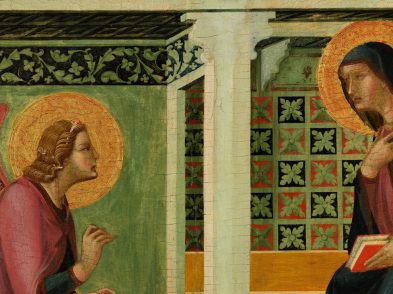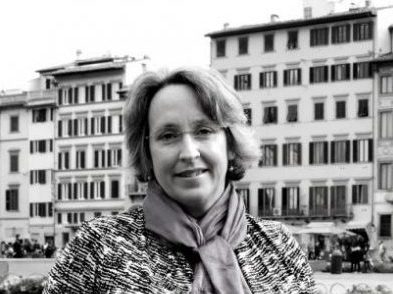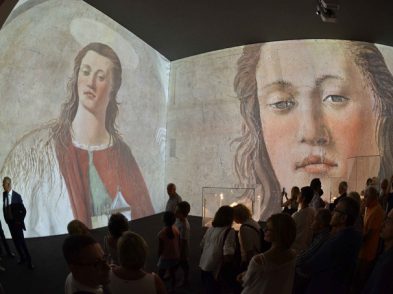The idea of ‘live restorations’ might seem an oxymoron: how can you bring life to a static object that, at the very most, is the product of an individual’s creativity? Don’t get me started on Eugenio Montale’s theory about the second life of art, which suggests that music, poetry, writing and art begin to live during the act of creation but complete their existence when they are listened to, read or viewed. Welcome to the twenty-first century, Eugenio: we’re talking about the ‘third life’ of art now.
As I pointed out in a previous article (see TF 161), watching art conservators at work taps into the collective imagination. It is part of the zeitgeist, oramai. It’s akin to watching Grey’s Anatomy or House or ER but instead of operating on children, convicts, and superstars, the ‘doctors’ are cutting into sculptures of saints, paintings of infants and frescoes of soldiers and famous historical figures. (Dr. Shepherd? No, that’s a real shepherd.)
Santa Croce, where conservators are already attending to Agnolo’s Gaddi’s frescoes, is the site of another project where visitors can watch restorers operate on Donatello’s statue of Saint Louis di Toulouse.
This stunning piece, which weighs in at about 500 kilos and measures approximately 165 centimeters in height, will be a highlight of a 2013 exhibit entitled The Springtime of the Renaissance: Sculpture and the arts in Florence 1400-1460. Organized by Florence’s Palazzo Strozzi and the Louvre in Paris, where it will travel after its debut in Florence, the exhibit examines sculpture and art in Florence between 1400 and1460.
The sculpture has a curious history. During World War II, Bruno Bearzi, the well-known Florentine restorer, was asked to move more than 100 works of art from Florence to an abandoned train station in Incisa Valdarno for their safety, and Saint Louis di Toulouse was among them. After the war, the works were returned, and between 1946 and 1948 Bearzi restored the sculpture. In the process, he discovered that it was made not of bronze, as people had previously thought, but of gold. The greenish patina was not the oxidation of bronze but a deposit of dirt accumulated when the statue sat in a niche on the exterior of Orsanmichele.
As a result of Bearzi’s discovery, between 1948 and 1950 the piece was exhibited widely, even traveling to the United States. It was then placed in its current position in a niche in the left wall of the refectory of Santa Croce. Bearzi came to its rescue once again after the 1966 flood, cleaning off the mud and damaging substances that had covered it.
Now, in preparation for the 2013 exhibit, the sculpture is being restored for a third time, and done so in full view. The restoration work is being conducted by Ludovica Nicolai under the direction of Brunella Teodori. It is open to the public from Monday to Saturday, 9:30 am to 5:30pm; Sundays and Catholic holidays from 1 to 5:30pm. Tickets cost 5 euro for adults; 3 euro reduced rate; free entry for residents of Florence and province. See www.santacroceopera.it for details.
Plan ahead
The exhibit The Springtime of the Renaissance: Sculpture and the arts in Florence 1400-1460 will be at Palazzo Strozzi in Florence from March 23 to August 18, 2013, and at the Musee du Louvre in Paris from September 23 to January 6, 2014. Check the website, www.palazzostrozzi.org, which will be updated with more information in the lead up to the exhibit.








